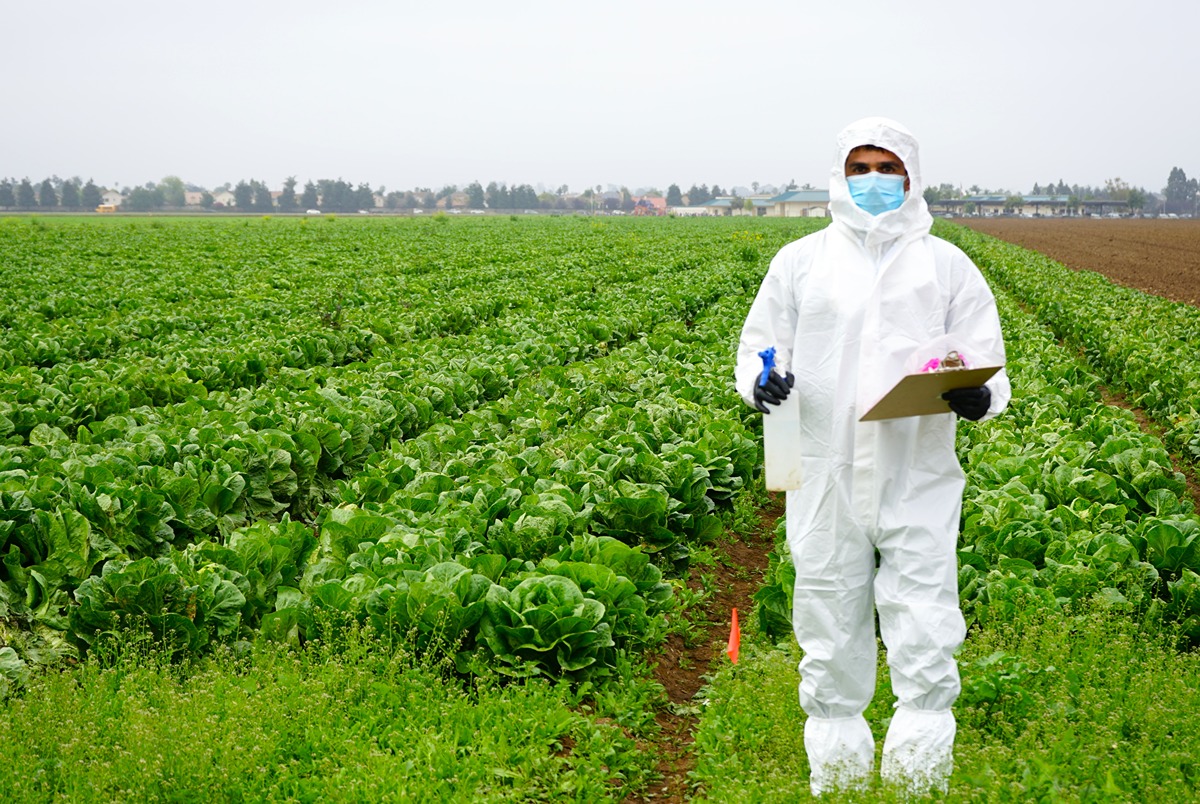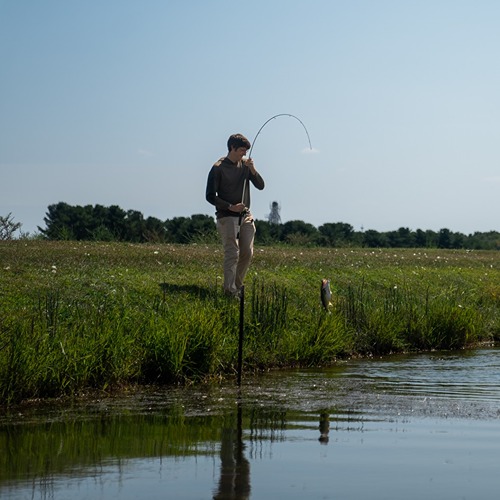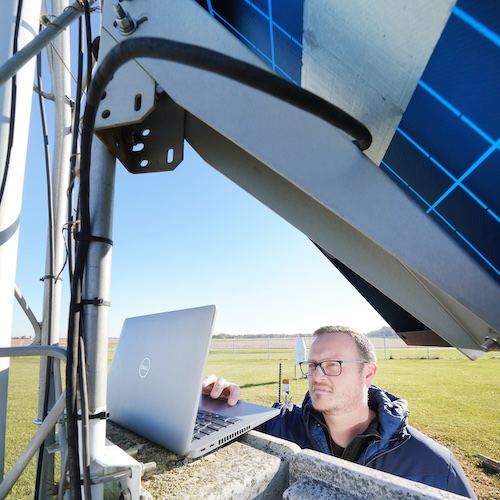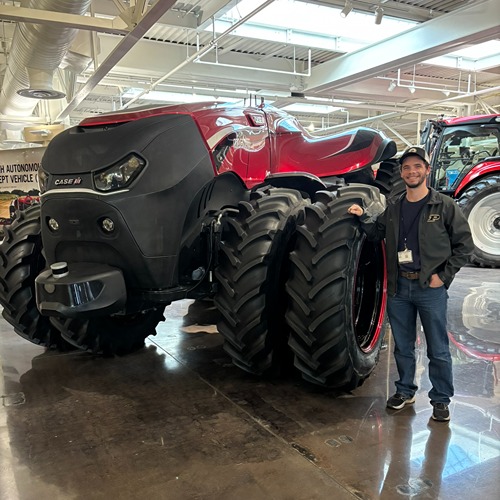Taking steps toward “safer salads” with fecal-contamination tests for fresh produce
Jiangshan Wang, a graduate student in the Department of Agricultural & Biological Engineering, knew he wanted to take on a project that would impact the food system for millions. After a spike in recalls of fresh fruits and lettuce in America, Wang joined the effort to detect and predict fecal contamination on produce before it gets into markets for “safer salads.”
When animal or human waste gets into a field, it can leave pathogenic, or disease-causing, microbes on the plants that originate from several sources: concentrated animal feeding operations nearby, improperly-processed manure as fertilizer and even wildlife droppings as they pass through farms and gardens. Once fecal matter is nearby, wind, water and animal movement can allow the pathogens to leap from one plant to another.
The guidelines for detecting fecal contamination in the field are still largely based on visible, unquantifiable observations, which has led to contamination and recalls in American markets. Wang looked to how water is tested for inspiration.
“Bacteroidales is very popular in water-quality research, but this has not been done in fresh produce,” Wang explained. “In water, there is a known baseline level of Bacteroidales that’s safe, and there’s a threshold where the amount shows something hazardous involved. But for fresh produce, we're starting everything from the beginning.”
Bacteroidales is an order of bacteria only found regularly in large amounts in the guts of warm-blooded animals. While Bacteroidales itself is non-pathogenic, high levels of it suggest fecal contamination and the possibility of related pathogens in the system.Wang and associate professor of agricultural and biological engineering, Mohit Verma, have been developing two kinds of tests that detect the DNA of Bacteroidales on plants. One uses qPCR, which Wang calls the “gold standard,” but it can only be done in a lab. Recently, they have used this technique to make baseline measurements that indicate background levels of Bacteroidales in highly-regulated commercial romaine lettuce fields in California’s Salinas Valley. They found a very low level of 0 to 2.00 copies of Bacteroidales DNA per cm2.
With this background level established, Wang and Verma are focused on making tests commercially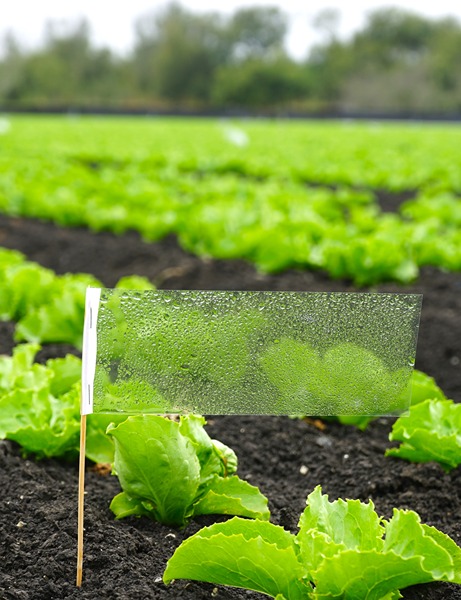 available for growers. With collection flags—plastic sheets attached to bamboo stakes—placed around the field, producers can swab and test several areas of their crop. Verma’s lab has produced molecular tests (using loop-mediated isothermal amplification or LAMP) that can be done with just some warm water incubation, and results can be read in an hour.
available for growers. With collection flags—plastic sheets attached to bamboo stakes—placed around the field, producers can swab and test several areas of their crop. Verma’s lab has produced molecular tests (using loop-mediated isothermal amplification or LAMP) that can be done with just some warm water incubation, and results can be read in an hour.
This quick test, in conjunction with the current environmental assessment done by eye, could give growers the ability to make quick determinations about where contamination is present in their fields to avoid losing entire harvests and having negative health impacts on consumers. Verma and Wang aren’t stopping there, however.
Even though it’s common in the guts of lots of animals, each different host animal has a slightly different Bacteroidales in their system. This small change between species can be picked up in the bacteria’s DNA, and that can be used to trace where fecal contamination is coming from and give growers a chance to resolve issues.
Wang and Verma are also looking into using weather data and pattern-recognizing metadata to predict areas of highest risk for fecal contamination. The hope is to eventually use the computer model to build a public database where growers can look up the risk estimated for their land to make decisions about management before even planting seeds.
